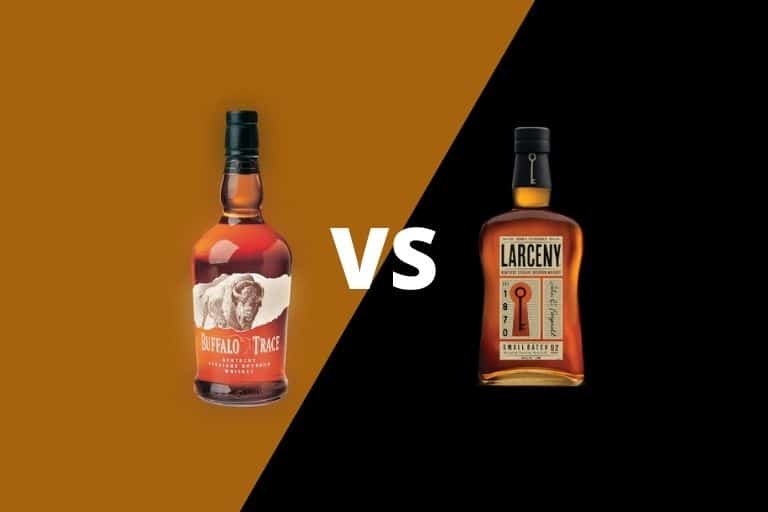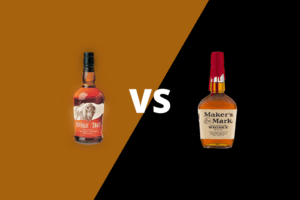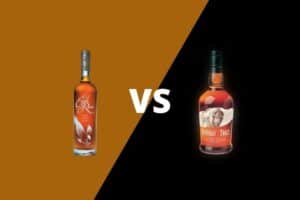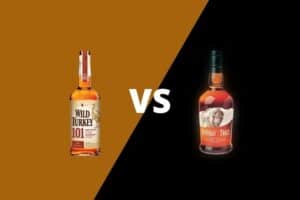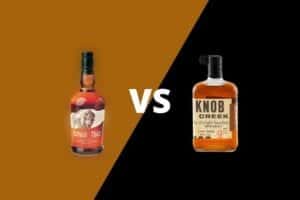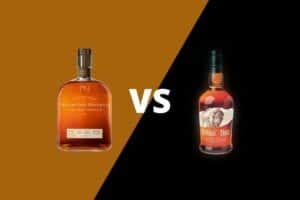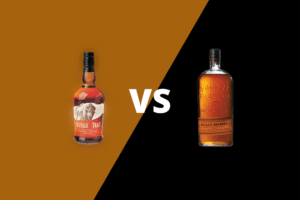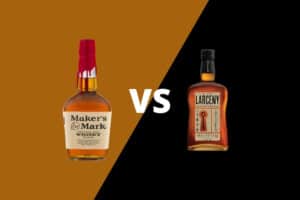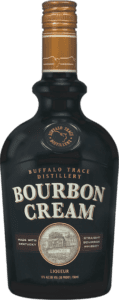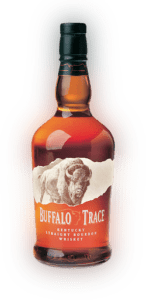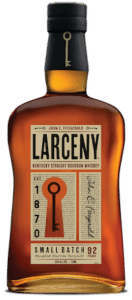Whiskey aficionados are deeply familiar with two of the most recognizable names in bourbon: Buffalo Trace and Larceny bourbon. But how do these two match up when compared side-by-side?
Bourbon geeks know both of these bourbons punch out of their weight class when it comes to the quality of the liquid in the bottle compared to the relatively low price points on shelves. Each is a great addition to both the new whiskey drinker looking for an entry brand for his journey in spirits, the bar manager looking to keep a curated spirits list, bartenders reaching for a well-respected bourbon to build a cocktail, as well as the seasoned enthusiast looking for a solid expression to anchor their full bar.
Let’s take a look at these two big name contenders to explore their history, story and unique brand attributes that make them both coveted bourbon offerings at any bar or whiskey lounge.
Table of Contents
Round 1: History
The Buffalo Trace Distillery has a long history that goes back about 200 years, when settlers first moved to the pioneer town of Leestown, in what was then the Kentucky territory of Virginia. The Buffalo Trace Distillery is home to the oldest continuously operating stills in the United States. But the Buffalo Trace brand is a little younger — it was first released in 1999.
Larceny Bourbon’s origin story is based around the historical figure of John E. Fitzgerald — a bonding agent during the early 19th century — but the brand wasn’t actually released until 2012.
Round 1 goes to Buffalo Trace! Bourbon historians may appreciate Buffalo Trace’s important place in the evolution of the spirit.
Round 2: Ownership
Both Buffalo Trace and Larceny bourbons are owned by large, well-known international spirits producers based in Kentucky.
Buffalo Trace Bourbon is owned by the Sazerac company.
Larceny Bourbon is owned by Heaven Hill.
Round 2 is a tossup.
Round 3: Mash Bills
The mash bill — or mashbill — is perhaps the biggest difference between these two quality products. Buffalo Trace is what is known as a high-rye bourbon whiskey while Larceny is a wheated bourbon whiskey.
What does that mean?
Well, by definition bourbon must be made using grain, and at least 51 percent of the grain the mash bill — the ingredients used during fermentation — must be corn. The remaining ingredients are referred to as flavoring, or secondary grains.
Both have 51 percent corn. And each will contain a certain percent malted barley, which contributes important enzymes that make the starches in the grain edible to yeast during fermentation.
But as a wheated bourbon whiskey, Larceny Bourbon uses wheat as its flavoring grain to create what is known as a wheated mash. As a high-rye bourbon whiskey, Buffalo Trace uses a large percent rye as its predominant flavoring grain.
Round 3: Draw! The judges are split. Depending on your preference, you might favor a soft, mellow wheated whiskey like Larceny, or go for the full-flavor high-rye mash bill of Buffalo Trace.
Round 4: Maturation
Both Buffalo Trace and Larceny are both labeled as Kentucky Straight Bourbon Whiskey. The term ‘Straight’ on the label denotes that each barrel used in the production of the whiskey was aged for a minimum of two years in new American charred-oak barrels.
Neither bourbon has an age statement.
So, although the oak-influenced flavor profiles of each of these fine bottlings suggest an older bottling, we cannot say for sure how much time these products spent in the barrel, or how many barrels of bourbon are in each blend.
Round 4: Another draw. These two excellent bourbons are neck-and-neck.
Round 5: Distillation
Both of these bourbons are distilled using similar, large-scale methods.
Buffalo Trace is distilled at the historic Buffalo Trace distillery. Located in Franklin County, Kentucky, on the banks of the Kentucky River, Buffalo Trace Bourbon is distilled using limestone-filtered and the continuous distillation method on the same stills from which brands like Eagle Rare, E.H. Taylor, George T. Stagg, Sazerac Rye and many other favorites are made.
Not to be outdone, Heaven Hill’s Larceny Bourbon is distilled at the Heaven Hill Springs Distillery in Bardstown, Kentucky. Other notable brands distilled by Heaven Hill include Henry McKenna, Old Fitzgerald and Elijah Craig.
Round 5 is another draw. Damn. These guys won’t quit.
Round 6: Price Point & Value
Buffalo Trace is bottled at 90-proof and will set you back about $27 for a 750mL bottle. Larceny is bottled at 92-proof and also costs about $27 for a 750mL bottle. Their reasonable price-points help explain why these are two of the best selling bourbon brands when it comes to market penetration.
At the same price, both have amazing bang-for-buck when it comes to retail price. However, with the slightly higher proof-point, Larceny Bourbon has the slight edge.
Round 7: Tasting Notes
In terms of flavor, these are both fantastic bourbons with unique flavors to offer.
Buffalo Trace Bourbon
Nose: Complex aroma, with notes of oaky wood barrel flavors, leather, tobacco and vanilla.
Tongue: Wide range of flavors. Bold spicy rye character with black pepper and walnut notes.
Finish: Spicy, earthy with lingering toffee and notes of cinnamon.
[Related: Complete Buffalo Trace Bourbon Review]
Larceny Bourbon
Nose: Wheat grain gives sweet honey character to this bourbon, along with vanilla and cherry notes.
Tongue: Distinct sweet caramel flavor, along with toffee, butterscotch and honey notes.
Finish: Long and nutty, with almond, walnut, apricot and vanilla.
[Related: Complete Larceny Bourbon Review]
The judges needed some help to decide this round. On social media, Buffalo Trace won the head-to-head poll against Larceny, earning 100 percent of the votes!
Verdict… Buffalo Trace!
Wow, what a colossal battle. Can you believe it? Both of these brands of bourbon are a welcomed addition to any whiskey lover’s bar. Bourbon drinkers know to look for the spice notes and vanillas in the high-rye Buffalo Trace or the mellow sweetness from the soft wheat in Larceny. Tastes differ, but people throughout the industry have high regard for both of these whiskeys.

